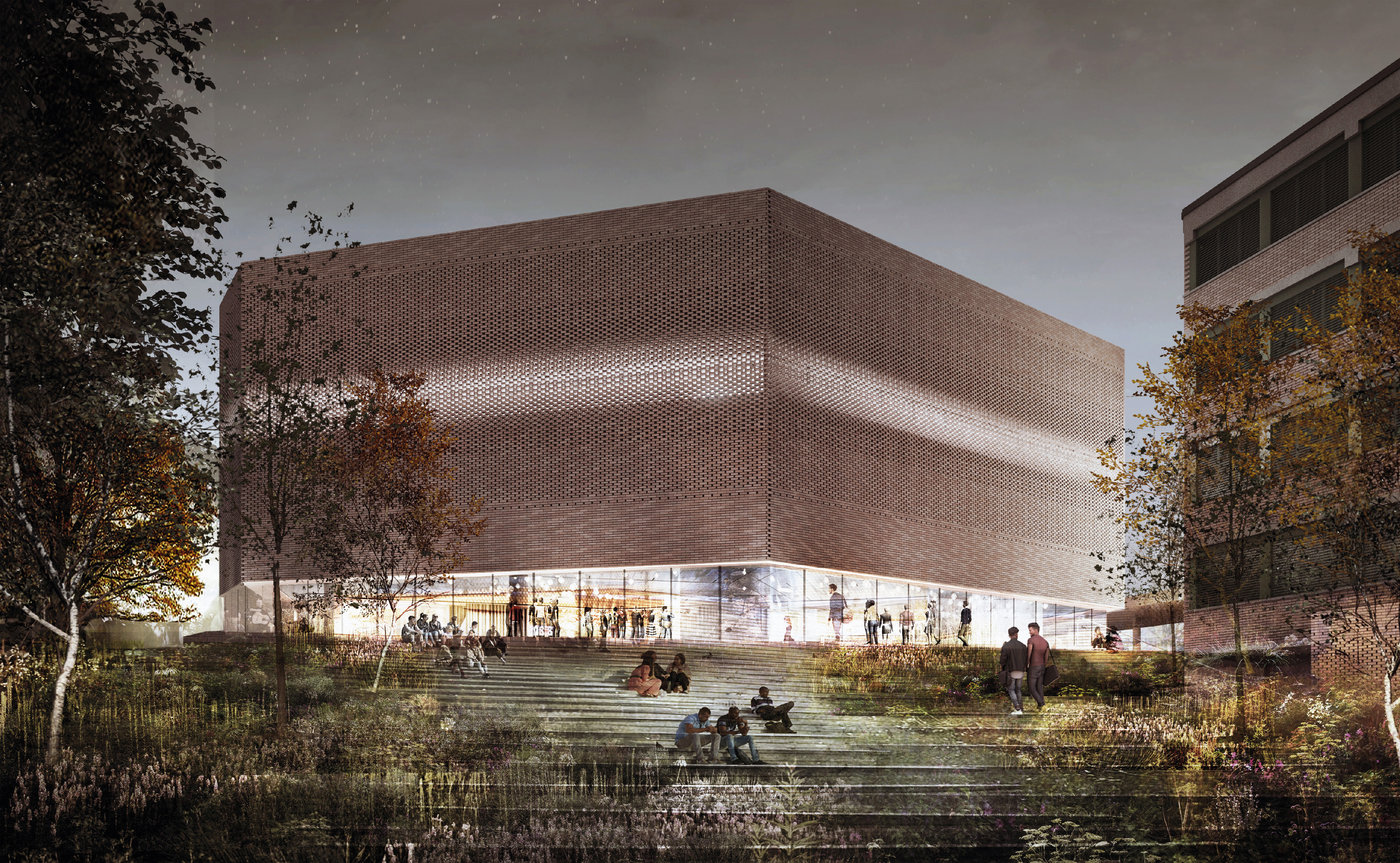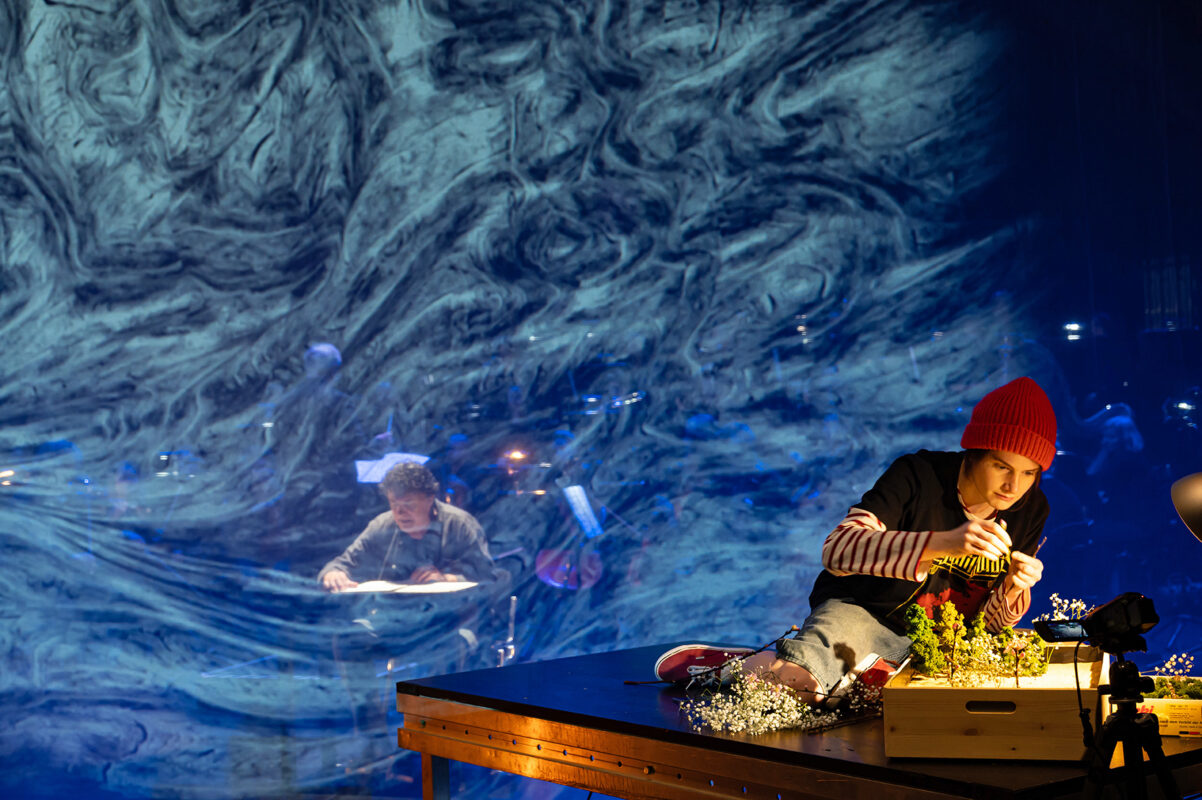Ticino music campus takes shape
Some of the canton's most important musical institutions are to find a shared home on the current radio site in Lugano. The presentation of the winning architectural project on December 12 provided the first comprehensive information about the ambitious "Città della Musica" project.

The Città della Musicathe name of the project, is being built on the former site of Radio Svizzera italiana (RSI) in the Besso district above the SBB railroad station. The main user is the Conservatorio della Svizzera italiana (CSI)partners are the Orchestra della Svizzera italianathe Coro RSI and the Barrocchisti by Diego Fasolis, the Swiss National Sound Archives and the association Sonart. (Radio will keep some of its studios here, but will move all its other activities to the television site on the outskirts of Comano). The total costs are estimated at around 45 million francs. Donors are the city of Lugano, the canton and, as far as the CSI is concerned, the federal government. Around a third is to come from private investors. Construction is scheduled to begin in 2025 and the Città should be completed by 2028.
Cultural hotspot with supra-regional appeal
The project, which complements the modern LAC concert hall on the lakeshore, will create a cultural cluster that underlines Lugano's growing importance as a city of music halfway between Zurich and Milan. From a local perspective, the Città della Musica There is also a significant gap in the infrastructure. The LAC has no rehearsal rooms, and the acoustically unique Auditorio Stelio Molo on the radio site is a sought-after location for recordings, but too small for symphonic ensembles. The Città della Musica will put an end to the rehearsal room crisis.
Apart from the great benefits for professional training and research, the campus with its generous space also opens up new perspectives in terms of cultural policy. The musical institutions should open up to the city and the region, it is said, on the one hand through the low-threshold access to the site and to the events, and on the other through the Conservatorio's range of courses. The President of the Conservatorio Foundation, Ina Piattini Pelloni, speaks of the integrative effect that the project will have, bringing all generations together musically. In addition to the internationally oriented university and the pre-college department, the music school with its basic education for children and young people will also benefit from the new location. Great importance is attached to general music education in Lugano. For example, the Friends of the Conservatorio association, which is dedicated to promoting young talent, has raised 160,000 francs for the current school year alone, providing over 150 scholarships to students from less well-off families - a different kind of inclusion.
Architectural synthesis of old and new
The Architecture Club's award-winning project is also committed to the principle of openness. The young team of architects from Basel, who also designed the Campus 2040 for the Basel Music Academy, came up with a solution for the redesign of the site that has now received much acclaim at the presentation. The spacious ensemble of existing buildings remains largely untouched on the outside, and their astonishingly timeless design language from the 1950s has been unobtrusively adopted for the new buildings. The hexagonal Auditorio Stelio Molo will remain at the heart of the center. However, the polygonal building of the generously proportioned, multifunctional rehearsal hall, which can accommodate up to three hundred people for concerts and, like all the other buildings, blends organically into the park-like surroundings, now has a more important function. The Japanese company Nagata Acoustics, which also left its mark on the Elbphilharmonie concert hall in Hamburg, is responsible for the acoustic design of all rehearsal and practice rooms on the site.
Exemplary cooperation at all levels
The Città della Musica project is supported by a broad social consensus. In the speeches and personal conversations at the press conference, there was a sense of collective euphoria about the successful start. "All declarations of intent and agreements have been reached in a collegial, trusting relationship," says Conservatory Director Christoph Brenner, who was instrumental in driving the project forward. "There is this will in a small canton to really work together." The word "change of mentality" was used, and some spoke of a minor miracle: all decision-makers, from the institutions involved to senior politicians, had pulled together. Good conditions for the development of a promising, locally well-anchored music culture with international appeal.
Ticino, just a vacation paradise with palm trees, spaghetti and vino rosso? The new foundation disproves this preconception. After the LAC, the Città della Musica is a further step on the way to becoming a cultural canton.
Link: cittadellamusica.ch







